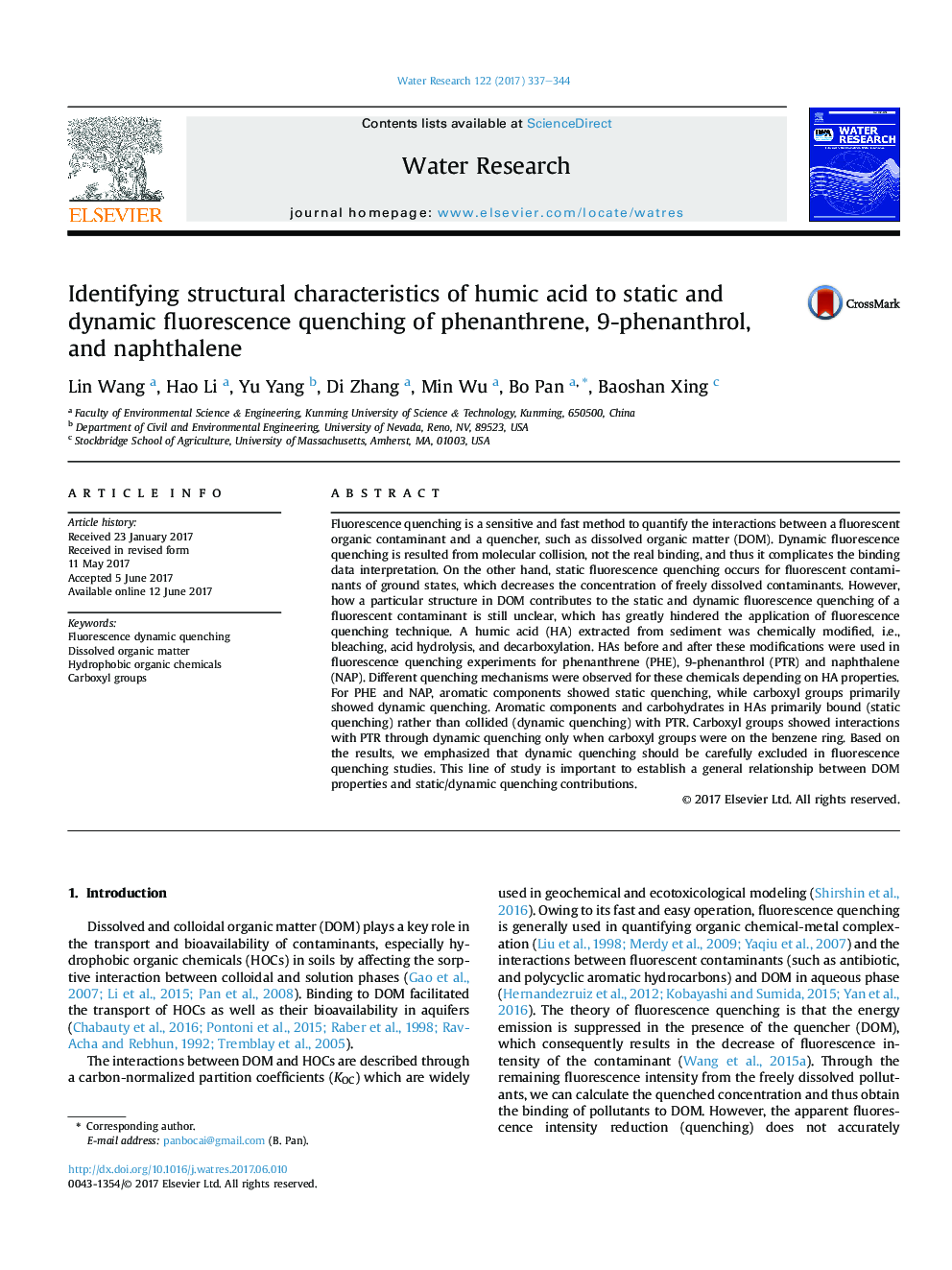| کد مقاله | کد نشریه | سال انتشار | مقاله انگلیسی | نسخه تمام متن |
|---|---|---|---|---|
| 5759396 | 1623046 | 2017 | 8 صفحه PDF | دانلود رایگان |
- Dynamic quenching is over 20% of the overall quenching for the studied humic acids.
- Aromatic components in humic acids show static quenching to the studied chemicals.
- Carboxyl groups show dynamic quenching to phenanthrene and naphthalene.
- Carboxyl groups on benzene rings show dynamic quenching to 9-phenanthrol.
Fluorescence quenching is a sensitive and fast method to quantify the interactions between a fluorescent organic contaminant and a quencher, such as dissolved organic matter (DOM). Dynamic fluorescence quenching is resulted from molecular collision, not the real binding, and thus it complicates the binding data interpretation. On the other hand, static fluorescence quenching occurs for fluorescent contaminants of ground states, which decreases the concentration of freely dissolved contaminants. However, how a particular structure in DOM contributes to the static and dynamic fluorescence quenching of a fluorescent contaminant is still unclear, which has greatly hindered the application of fluorescence quenching technique. A humic acid (HA) extracted from sediment was chemically modified, i.e., bleaching, acid hydrolysis, and decarboxylation. HAs before and after these modifications were used in fluorescence quenching experiments for phenanthrene (PHE), 9-phenanthrol (PTR) and naphthalene (NAP). Different quenching mechanisms were observed for these chemicals depending on HA properties. For PHE and NAP, aromatic components showed static quenching, while carboxyl groups primarily showed dynamic quenching. Aromatic components and carbohydrates in HAs primarily bound (static quenching) rather than collided (dynamic quenching) with PTR. Carboxyl groups showed interactions with PTR through dynamic quenching only when carboxyl groups were on the benzene ring. Based on the results, we emphasized that dynamic quenching should be carefully excluded in fluorescence quenching studies. This line of study is important to establish a general relationship between DOM properties and static/dynamic quenching contributions.
182
Journal: Water Research - Volume 122, 1 October 2017, Pages 337-344
